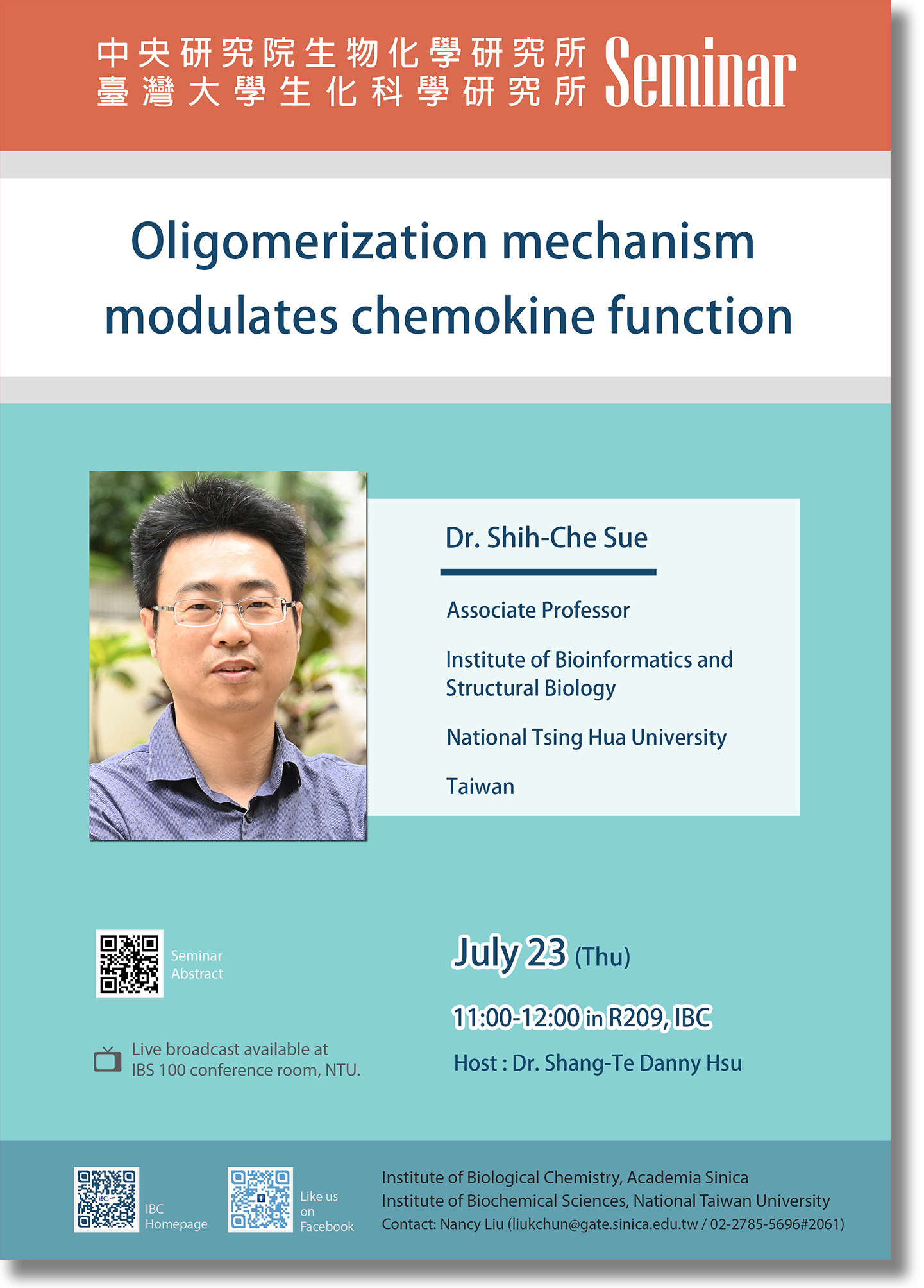2020-07-23 11:00 ~ 2020-07-23 12:00
地點: 生化所209室
主講人: 蘇士哲博士
主講人背景: 國立清華大學生物資訊與結構生物研究所副教授
演講主持人: 徐尚德副研究員
演講摘要:
Chemokines, acting as chemotactic cytokines, control migration in nearby responsive cells, including leukocytes and macrophages. The molecules are broadly associated with inflammation, angiogenesis and viral infection. Chemokines commonly form different orders of oligomers that contribute functional diversities. Regarding the special feature, we will discuss two special oligomerization mechanisms of two chemokines, CCL5 and CXCL4. CCL5 shows great propensity for oligomerization in physiological condition. The oligomer formation is important for glycosaminoglycan (GAG) binding and has been correlated with apoptosis, T cell activation and HIV cell entry. NMR and biophysical analyses proposed that CCL5 dimer acts as the unit to constitute the oligomer. We developed strategies to study the oligomerization states by mixing CCL5 mutants, which are deficient in forming oligomer, with the native CCL5 to prepare complexes with limited oligomerized structure. Under an optimal condition, we were able to study the CCL5 oligomer and established the oligomerization mechanism. The CCL5 oligomerization is through more than one interaction that the interactions of E66 to K25 and E66 to R44/K45 are alternatively adopted. We will explain how the different interactions contribute in CCL5 oligomerization and even lead to a filament-like structure. Chemokine CXCL4 has anti-angiogenic property, mediated through binding a membrane receptor, CXCR3. CXCL4L1, a CXCL4 variant with three-residue difference in the C-terminal helix, has been reported to have higher potency of anti-angiogenesis. In the X-ray crystallography, the two chemokines shared structural similarity of forming a tetramer. To understand how the structural difference derives the functional discrepancy, we characterized their solution properties. CXCL4L1 but not CXCL4 with great tendency to dissociate into monomers. The CXCL4/CXCL4L1 monomer acts as the minimal active unit for activating CXCR3. CXCL4L1 also shows higher ability in recognizing CXCR3 extracellular regions. The result could explain why CXCL4L1 contains higher biological activity when compared with the native CXCL4.-Dr. Shih-Che Sue
洽詢人員: 劉小姐
洽詢電話: 02-27855696#2061
洽詢信箱: liukchun@gate.sinica.edu.tw

 中央研究院 生物化學研究所
中央研究院 生物化學研究所

 中央研究院 生物化學研究所
中央研究院 生物化學研究所
